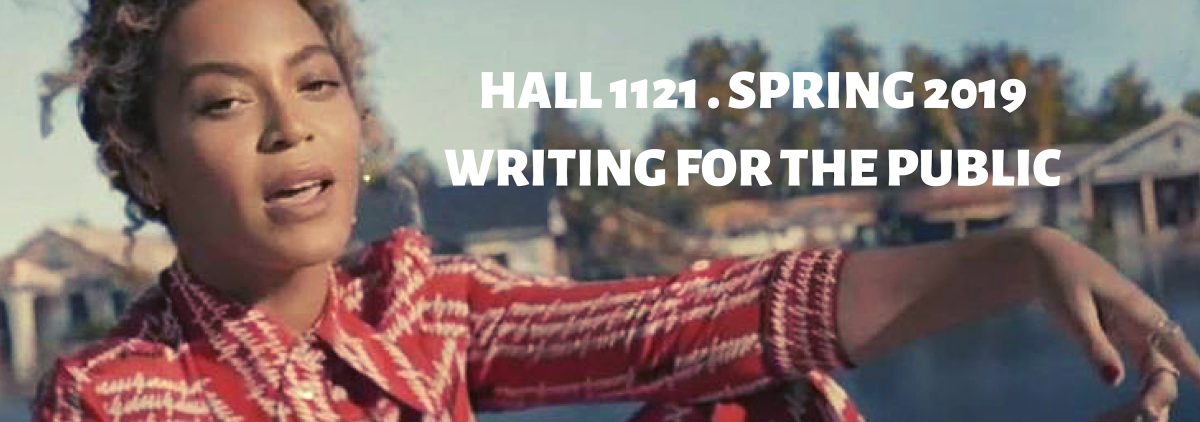Community Problems – and working toward community solutions
We have spent some time in this course identifying problems in contemporary America—especially in New York City. In this unit, you will be working in groups of four or five to:
- Find out as much as you can about those problems
- Figure out who might be able to impact change on those problems (this will be your audience.) As a group, you may decide that you need to reach more than one audience.
- Develop a document (or documents) that you think will best reach that audience. This might be a brochure, a speech, a video, a magazine article, or anything else that you believe will impact your audience and encourage them to begin making change toward solving this problem.
It’s up to you to decide if you want to do a big final group project, or if you want to do smaller individual final projects. You should make this decision based on, not only your own needs, but also the problem and audience you’ve chosen. In other words– who do you need to reach and how can you best reach them?
GETTING SPECIFIC
I say “begin making change” because the problems we have identified are not simple to solve. If they were, they would’ve been solved by now. Too often, student papers are oversimplified: “Racism would end if people just saw each other for who they are” or something like that. What I want you to look for here are CONCRETE steps that ACTUAL individuals can take, even if they are only steps in the right direction. For example, if we are looking at racial profiling among the police in the Bronx, we might want to address a community group to insist on specific practices for hiring a more diverse police force, or a police force that lives in a borough they serve. We might also want to address the police commissioner to ask for police cameras or training for the police.
Whatever the case, your first step is to research the problem. You might think you know off the top of your head what the solution to your problem is, but you will need to back this up with evidence.
STEPS
Step 1: Have a group meeting. Brainstorm together what you KNOW about this problem and what you WANT to know about this problem. Go ahead and do some quick Internet research on your phones. What did you LEARN from this research? What do you STILL need to know?
We’re going to go to the library after this meeting, so you’ll need to be prepared with some questions. What do you need to get a full scope of this problem? How are you going to delegate the research? There are four of you, so you should each have your own separate task. This is important– you don’t want everyone looking up the same thing. That way, you can come together and share the info. You may also want to interview some people in the community! You’re going to have a few days to do this research.
After the library research, everyone should write up a memo for the group. What have you found?
Step 2: In your next meeting, look at your research. Do you need to find out more? Also, WHO do you think you need to reach in order to start working toward a solution to this problem? What do you think will be the best genre to reach them?
Step 3: It’s time to define your own project. That is, what are the documents (or what is the document) that you guys are going to make in order to reach this audience or audiences? What I’m looking for here is a document that is enough work for all four of you—so if you are, for example, making a 20 page informational brochure to present to the City Council, that is certainly enough for all of you. However if you are doing a poster, that’s probably a 1-2 person job. In this case, some of you might do a poster, and some others of you may do, for example, a video essay to accompany that poster.
Your finished project should: explain the problem to your audience in a genre appropriate to that audience, using diction appropriate to that audience. It should look like a finished document (a decent-looking brochure, a well thought-out video essay.) I know you’re not all graphic designers, but you do need to present this document, and every document you write (for all your classes) with care. Also– even if everyone is doing separate parts of the final project, they should all fit together!
How will this be graded?
- The thoroughness of your research. In other words, how well do you understand the problem you are trying to impact? I will assess this through your research memos (DUE DATE)
- Your work on audience: have you identified an appropriate audience/ appropriate audiences? Have you identified a genre and tone that will reach that audience?
- The care you put into your project. Does it seem finished?Is it thorough? I can’t give you a word count here, but this is your biggest project all semester, guys. If you turn in a brochure with 100 words on it, you won’t pass. This is because you can not make a compelling argument in 100 words. You need to have ENOUGH INFORMATION there to make that argument.



